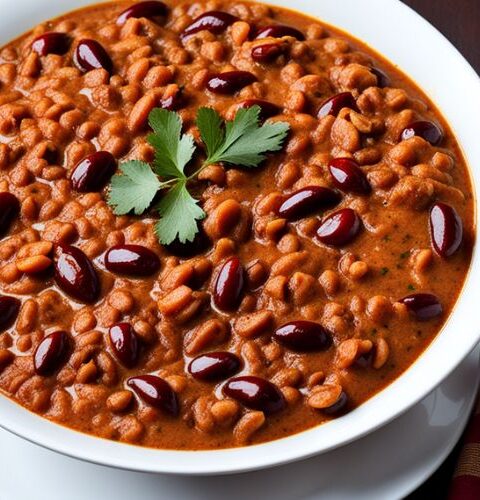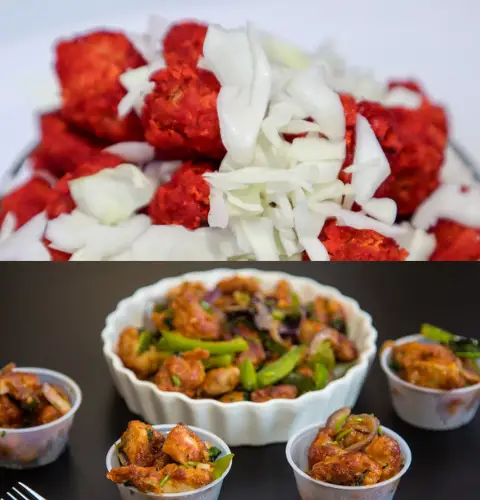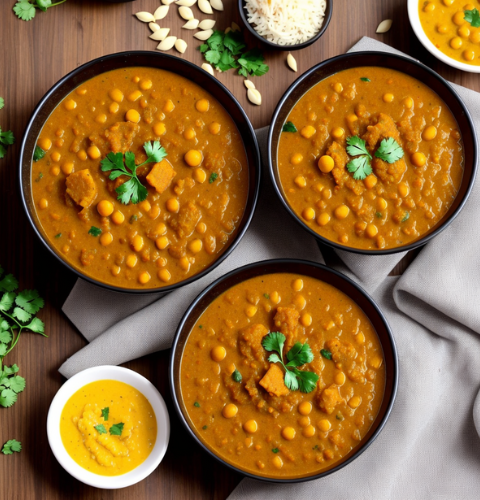Chana Dal Step-by-Step
Chani dal, a small but mighty legume, is a staple in Indian cuisine known for its rich taste, versatility, and nutritional benefits. This blog will guide you to a delightful gram dal recipe that not only satisfies your
taste buds, but also provides a healthy and hearty meal option. From its history to its step-by-step preparation, let’s embark on a culinary journey celebrating the aromatic and comforting essence of gram dal.
Chana dal has been a culinary gem in Indian kitchens for centuries. Its roots can be traced back to ancient times, when it was an important part of traditional Indian cuisine. As the culinary landscape evolved,
Chickpeas found their way into various cuisines, with each region adapting it to its unique culinary traditions. Today, it remains a beloved ingredient, celebrated for its versatility and ability to absorb countless flavors

Perfect Chana Dal Recipe: A Step-by-Step

Chana Dal Step-by-Step
Ingredients
For Cooking Dal
- 1 cup Chana Dal (rinsed)
- 3 cups Water (for soaking and cooking)
- ½ teaspoon Turmeric Powder
- Salt to taste
For Tempering
- 2 tablespoons Ghee or Oil
- 1 teaspoon Cumin Seeds
- 1 Onion, finely chopped
- 2 Tomatoes, chopped
- 1 Green Chili, finely chopped
- 1 tablespoon Ginger-Garlic Paste
- ½ teaspoon Red Chili Powder
- 1 teaspoon Coriander Powder
- Chopped Cilantro for garnish
Soaking gram dal:
- Wash 1 cup of dal well.
- Soak the gram dal in 2 cups of water for at least 2 hours. This softens the dal, reducing the cooking time.
To cook gram dal:
- Drain the soaked gram dal.
- Add 3 cups of water and soaked gram dal to the pressure cooker.
- Cook for 2–3 whistles or until the lentils are soft and well roasted.
Tempering:
- Heat ghee or oil in a separate pan.
- Add cumin and let it splutter.
- Add finely chopped onions and sauté till golden brown.
Flavors and spices:
- Add the ginger-garlic paste and sauté till the raw aroma disappears.
- Add green chillies and chopped tomatoes, and cook till the tomatoes become soft.
Seasonings:
- Add turmeric powder, red chilli powder, coriander powder, and salt. Stir well to combine the spices.
Mixture of molasses and tempering:
- Once the gram dal is cooked, add the prepared tempering to it.
- Allow the dal to simmer on low heat for 10–15 minutes.
Serve garnished with:
- Garnish the gram dal with freshly chopped coriander.
- Serve hot with rice or your choice of Indian bread, such as naan or roti.
Tips for Flavorful Chana Dal
- Soaking time: Make sure you soak the chickpeas long enough to achieve the desired softness.
- Tempering Technique: Master the art of tempering to infuse the dal with aromatic flavors.
- Spice Levels: Adjust the spice level according to your taste preferences.
- Fresh Ingredients: Use fresh tomatoes, onions and cilantro for the best taste.
Nutritional Benefits Chana Dal
Wealthy in protein:
- Chickpeas are a great wellspring of plant-based protein, making them a significant protein choice for veggie lovers and vegetarians.
Increased dietary fiber intake:
- With significant fiber content, chickpeas support digestive health by promoting regular bowel movements and preventing constipation.
Complex Carbohydrates:
- The complex carbohydrates in chickpeas continuously release energy, which helps stabilize blood sugar levels.
Low Glycemic Record:
- Chickpeas have a low glycemic record, meaning they negligibly affect glucose levels. It is appropriate for people with diabetes or those expecting to oversee glucose.
Plentiful in nutrients and minerals:
- Chickpeas are a decent source of fundamental nutrients and minerals, including iron, manganese, phosphorus, and folate. These supplements are critical for different physical processes.
Heart Health:
- Soluble fiber in chickpeas can help lower cholesterol levels, contribute to heart health, and reduce the risk of cardiovascular diseases.
Weight the executives:
- The blend of protein and fiber in chickpeas advances sensations of completion, which can assist with weight loss by diminishing calorie intake.
Cell reinforcement properties:
- Chickpeas contain cancer prevention agents like flavonoids, which assist with battling oxidative pressure and safeguard the body’s cells from harm.
Bone Health:
- The minerals in chickpeas, including phosphorus and manganese, contribute to strong and healthy bones.
Blood pressure regulation:
- The potassium in chickpeas helps control blood pressure by counteracting the effects of sodium.
Conclusion
In the tapestry of Indian cuisine, gram dal weaves a story of taste, tradition, and nutrition. From its historical origins to countless recipes, gram dal is a culinary hero. This step-by-step guide provides you with the tools to unlock the full potential of chickpeas in your kitchen, creating a dish that not only tantalizes the taste buds but also celebrates the cultural richness contained in each delicious gourd. As you embark on this culinary journey, the aromas of spices and heart-touching

FAQ
1. What is chana dal called in English?
- Chana dal, referred to as Bengal gram split or split chickpeas, is the English name for this legume. It is derived from black chickpeas, where the outer skin is removed, resulting in the yellow, split, and polished legume known as chana dal. With an obvious nutty flavor and smooth surface, chana dal is a staple in Indian food, adding to different dishes. Wealthy in plant-based protein, fiber, and fundamental supplements, it isn’t just valued for its culinary flexibility but also for its dietary advantages, making it an esteemed fixing in worldwide culinary settings.
2. Is chana dal a chickpea?
- Yes, gram dal is made from gram. This process results in yellow, split, and polished pods known as gram dal. While chickpeas and whole chickpeas share a vegetable origin, they differ in texture and culinary application.Chana dal is a staple in Indian cooking, commended for its nutty flavor and flexibility. It fills in as an essential fixing in different hot dishes, bestowing flavor and surface as well as nourishing advantages to a large number of culinary manifestations.
3. What is Chana Dal?
- Chana dal, made from parted and cleaned chickpeas, is a conspicuous heartbeat in Indian food. With a particular nutty flavor and smooth surface, it is a flexible natural product utilized in different delightful recipes. Stacked with plant-based protein, fiber, supplements, and minerals, chickpeas are a dietary awe-inspiring phenomenon. Its low glycemic record maintains stable glucose levels. From extraordinary stews to firm snacks, chickpeas suit different culinary applications, mirroring their culinary significance. In spite of their great taste, chickpeas are a central part of pushing stomach-related thriving, supporting weight loss, and adding to a fair, nutritious eating plan.
4. Is Chana Dal good for health?
- Indeed, chana dal is excellent for wellbeing. Loaded with plant-based protein, fiber, and fundamental supplements, for example, iron and nutrients, it upholds general prosperity. Its low glycemic index controls glucose, making it reasonable for diabetics. Fiber advances stomach-related wellbeing and weight loss. Rich in cancer prevention agents, chickpeas battle oxidative pressure. Furthermore, it contributes to heart wellbeing by assisting with regulating cholesterol levels. Its adaptability in cooking makes it a heavenly and nutritious feast choice. Remembering gram dal for your eating regimen lines up a reasonable and solid way to deal with sustenance, advancing a sound way of life.
5. Dal has the highest protein?
- Among the usually eaten beats, masoor dal (red dal) has the most noteworthy protein content. With around 24 grams of protein for every 100 grams, lentils are a magnificent wellspring of plant-based protein. It furthermore provides crucial enhancements, including fiber, iron, and B-supplements. Recalling lentils for your eating routine can help with meeting your protein needs; settling on them is a huge decision for veggie lovers and those expecting to construct their protein utilization. Its adaptability to various dishes adds to its charm, making it a nutritious and delightful choice for any eating schedule.
any question in your mind or you have any quary comment me i give you my answer thankyou








[…] vegetables, and paneer (Indian curds) are likewise washed in this delightful combination, permitting the fixings to retain their […]
[…] takes careful preparation to make Navrathan Korma, from slicing the paneer to blanching the vegetables.Due to its richness, the meal is a great addition to joyful occasions like Diwali and […]
[…] Cooking Tips For Chana Dal Step-by-Step […]
[…] Health Benefits of Dal TadkaChana Dal Step-by-Step […]